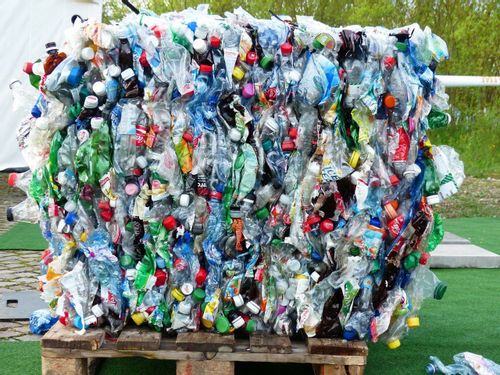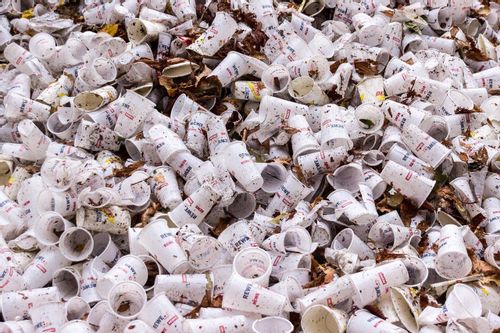EN ISO 527-1:2019
(Main)Plastics - Determination of tensile properties - Part 1: General principles (ISO 527-1:2019)
Plastics - Determination of tensile properties - Part 1: General principles (ISO 527-1:2019)
1.1 This document specifies the general principles for determining the tensile properties of plastics and plastic composites under defined conditions. Several different types of test specimen are defined to suit different types of material which are detailed in subsequent parts of ISO 527.
1.2 The methods are used to investigate the tensile behaviour of the test specimens and for determining the tensile strength, tensile modulus and other aspects of the tensile stress/strain relationship under the conditions defined.
1.3 The methods are selectively suitable for use with the following materials:
— rigid and semi-rigid moulding, extrusion and cast thermoplastic materials, including filled and reinforced compounds in addition to unfilled types; rigid and semi-rigid thermoplastics sheets and films;
— rigid and semi-rigid thermosetting moulding materials, including filled and reinforced compounds; rigid and semi-rigid thermosetting sheets, including laminates;
— fibre-reinforced thermosets and thermoplastic composites incorporating unidirectional or non-unidirectional reinforcements, such as mat, woven fabrics, woven rovings, chopped strands, combination and hybrid reinforcement, rovings and milled fibres; sheet made from pre-impregnated materials (prepregs);
— thermotropic liquid crystal polymers.
The methods are not normally suitable for use with rigid cellular materials, for which ISO 1926 is used, or for sandwich structures containing cellular materials.
Kunststoffe - Bestimmung der Zugeigenschaften - Teil 1: Allgemeine Grundsätze (ISO 527-1:2019)
1.1 Dieses Dokument legt die allgemeinen Grundsätze zur Bestimmung der Zugeigenschaften von Kunst-stoffen und Kunststoff-Verbundwerkstoffen unter festgelegten Bedingungen fest. Mehrere verschiedene Probekörpertypen sind für unterschiedliche Werkstoffarten festgelegt, die in den folgenden Teilen von ISO 527 näher beschrieben werden.
1.2 Die Verfahren werden verwendet, um das Zugverformungsverhalten von Probekörpern zu untersu-chen und die Zugfestigkeit, den Zugmodul und andere Gesichtspunkte der Zugspannungs-/Dehnungs-Bezie-hung unter festgelegten Bedingungen zu ermitteln.
1.3 Die Verfahren sind speziell zur Anwendung bei folgenden Werkstoffgruppen geeignet:
- steife und halbsteife thermoplastische Spritzguss-, Extrusions- und Gussformmassen, einschließlich gefüllter und verstärkter Verbunde als Ergänzung zu ungefüllten Sorten; steife und halbsteife thermo-plastische Platten und Folien;
- steife und halbsteife duroplastische Formmassen, einschließlich gefüllter und verstärkter Verbunde; steife und halbsteife duroplastische Platten einschließlich Schichtstoffe;
- faserverstärkte duroplastische und thermoplastische Verbundwerkstoffe mit unidirektionaler oder nichtunidirektionaler Verstärkung, wie Matten, Vliese und Gelege, Gewebe, Rovinggewebe, Kombina-tions- und Mischverstärkung, Stränge (Rovings) und Kurzfasern; Tafeln aus vorgetränkten Werkstoffen (Prepregs);
- thermotrope flüssigkristalline Polymere.
Die Verfahren sind üblicherweise nicht zur Anwendung mit harten Schaumstoffen, für die ISO 1926 ange-wendet wird, oder für Schichtstoff-Verbundwerkstoffe mit Schaumstoffkern geeignet.
Plastiques - Détermination des propriétés en traction - Partie 1: Principes généraux (ISO 527-1:2019)
1.1 Le présent document spécifie les principes généraux pour la détermination des propriétés en traction des plastiques et des composites en plastique dans des conditions définies. Plusieurs types différents d'éprouvettes sont définis en fonction des différents types de matériaux qui sont énumérés dans les parties suivantes de I'ISO 527.
1.2 Les méthodes sont utilisées pour étudier le comportement en traction des éprouvettes par la détermination de la résistance en traction, du module d'élasticité en traction et d'autres aspects de la relation contrainte/déformation en traction dans des conditions définies.
1.3 Les méthodes conviennent sélectivement aux matériaux suivants:
— matières thermoplastiques rigides et semi-rigides pour moulage, extrusion et coulée, y compris les compositions chargées et renforcées en plus des types non chargés; feuilles et films en thermoplastiques rigides et semi-rigides;
— matières thermodurcissables rigides et semi-rigides pour moulage, y compris les compositions chargées et renforcées; feuilles thermodurcissables rigides et semi-rigides, y compris les stratifiés;
— composites thermoplastiques et thermodurcissables renforcés de fibres comportant des renforts unidirectionnels et multidirectionnels tels que mats, tissus, tissus stratifils, fils coupés, combinaisons de renforcements et hybrides, stratifils et fibres broyées; feuilles réalisées à partir de matières préimprégnées (préimprégnés);
— polymères à cristaux liquides thermotropes.
En principe, les méthodes ne peuvent pas être appliquées aux matériaux alvéolaires rigides, pour lesquels l'ISO 1926 est utilisée, ou aux structures sandwichs contenant des matériaux alvéolaires.
Polimerni materiali - Ugotavljanje nateznih lastnosti - 1. del: Splošna načela (ISO 527-1:2019)
Ta dokument določa splošna načela za ugotavljanje nateznih lastnosti polimernih materialov in polimernih kompozitov pri določenih pogojih. Opredeljenih je več vrst preskušancev, da se zajamejo različne vrste materialov, ki so podrobno opisane v poznejših delih standarda ISO 527. Uporabljene so metode za preučevanje nateznih lastnosti preskušancev ter za ugotavljanje natezne trdnosti, nateznega modula in drugih vidikov razmerja natezna napetost/deformacija pri določenih pogojih. Metode so selektivno ustrezne za naslednje materiale: – trdi in poltrdi plastomerni materiali za oblikovanje, ekstrudiranje in vlivanje, vključno s polnjenimi in ojačanimi spojinami poleg nepolnjenih vrst; trdi in poltrdi plastomerni trakovi in filmi; – trdi in poltrdi termoreaktivni materiali za oblikovanje, vključno s polnjenimi in ojačanimi spojinami; trdi in poltrdi termoreaktivni trakovi, vključno z laminati; – z vlakni ojačani termoreaktivni in plastomerni kompoziti, ki vsebujejo enosmerne ali večsmerne ojačitve, kot so mati, tkanine, tkani rovingi, rezane niti, kombinacijske in hibridne ojačitve, rovingi in brušena vlakna; trakovi iz predhodno impregniranih materialov; – termotropni polimeri iz tekočih kristalov. Metode običajno niso primerne za trde penjene materiale, za katere se uporablja standard ISO 1926, ali za strukture tipa »sendvič«, ki vsebujejo penjene materiale.
General Information
Relations
Standards Content (Sample)
SLOVENSKI STANDARD
01-december-2019
Nadomešča:
SIST EN ISO 527-1:2012
Polimerni materiali - Ugotavljanje nateznih lastnosti - 1. del: Splošna načela (ISO
527-1:2019)
Plastics - Determination of tensile properties - Part 1: General principles (ISO 527-
1:2019)
Kunststoffe - Bestimmung der Zugeigenschaften - Teil 1: Allgemeine Grundsätze (ISO
527-1:2019)
Plastiques - Détermination des propriétés en traction - Partie 1: Principes généraux (ISO
527-1:2019)
Ta slovenski standard je istoveten z: EN ISO 527-1:2019
ICS:
83.080.01 Polimerni materiali na Plastics in general
splošno
2003-01.Slovenski inštitut za standardizacijo. Razmnoževanje celote ali delov tega standarda ni dovoljeno.
EN ISO 527-1
EUROPEAN STANDARD
NORME EUROPÉENNE
September 2019
EUROPÄISCHE NORM
ICS 83.080.01 Supersedes EN ISO 527-1:2012
English Version
Plastics - Determination of tensile properties - Part 1:
General principles (ISO 527-1:2019)
Plastiques - Détermination des propriétés en traction - Kunststoffe - Bestimmung der Zugeigenschaften - Teil
Partie 1: Principes généraux (ISO 527-1:2019) 1: Allgemeine Grundsätze (ISO 527-1:2019)
This European Standard was approved by CEN on 20 July 2019.
CEN members are bound to comply with the CEN/CENELEC Internal Regulations which stipulate the conditions for giving this
European Standard the status of a national standard without any alteration. Up-to-date lists and bibliographical references
concerning such national standards may be obtained on application to the CEN-CENELEC Management Centre or to any CEN
member.
This European Standard exists in three official versions (English, French, German). A version in any other language made by
translation under the responsibility of a CEN member into its own language and notified to the CEN-CENELEC Management
Centre has the same status as the official versions.
CEN members are the national standards bodies of Austria, Belgium, Bulgaria, Croatia, Cyprus, Czech Republic, Denmark, Estonia,
Finland, France, Germany, Greece, Hungary, Iceland, Ireland, Italy, Latvia, Lithuania, Luxembourg, Malta, Netherlands, Norway,
Poland, Portugal, Republic of North Macedonia, Romania, Serbia, Slovakia, Slovenia, Spain, Sweden, Switzerland, Turkey and
United Kingdom.
EUROPEAN COMMITTEE FOR STANDARDIZATION
COMITÉ EUROPÉEN DE NORMALISATION
EUROPÄISCHES KOMITEE FÜR NORMUNG
CEN-CENELEC Management Centre: Rue de la Science 23, B-1040 Brussels
© 2019 CEN All rights of exploitation in any form and by any means reserved Ref. No. EN ISO 527-1:2019 E
worldwide for CEN national Members.
Contents Page
European foreword . 3
European foreword
This document (EN ISO 527-1:2019) has been prepared by Technical Committee ISO/TC 61 "Plastics" in
collaboration with Technical Committee CEN/TC 249 “Plastics” the secretariat of which is held by NBN.
This European Standard shall be given the status of a national standard, either by publication of an
identical text or by endorsement, at the latest by March 2020, and conflicting national standards shall
be withdrawn at the latest by March 2020.
Attention is drawn to the possibility that some of the elements of this document may be the subject of
patent rights. CEN shall not be held responsible for identifying any or all such patent rights.
This document supersedes EN ISO 527-1:2012.
According to the CEN-CENELEC Internal Regulations, the national standards organizations of the
following countries are bound to implement this European Standard: Austria, Belgium, Bulgaria,
Croatia, Cyprus, Czech Republic, Denmark, Estonia, Finland, France, Germany, Greece, Hungary, Iceland,
Ireland, Italy, Latvia, Lithuania, Luxembourg, Malta, Netherlands, Norway, Poland, Portugal, Republic of
North Macedonia, Romania, Serbia, Slovakia, Slovenia, Spain, Sweden, Switzerland, Turkey and the
United Kingdom.
Endorsement notice
The text of ISO 527-1:2019 has been approved by CEN as EN ISO 527-1:2019 without any modification.
INTERNATIONAL ISO
STANDARD 527-1
Third edition
2019-07
Plastics — Determination of tensile
properties —
Part 1:
General principles
Plastiques — Détermination des propriétés en traction —
Partie 1: Principes généraux
Reference number
ISO 527-1:2019(E)
©
ISO 2019
ISO 527-1:2019(E)
© ISO 2019
All rights reserved. Unless otherwise specified, or required in the context of its implementation, no part of this publication may
be reproduced or utilized otherwise in any form or by any means, electronic or mechanical, including photocopying, or posting
on the internet or an intranet, without prior written permission. Permission can be requested from either ISO at the address
below or ISO’s member body in the country of the requester.
ISO copyright office
CP 401 • Ch. de Blandonnet 8
CH-1214 Vernier, Geneva
Phone: +41 22 749 01 11
Fax: +41 22 749 09 47
Email: copyright@iso.org
Website: www.iso.org
Published in Switzerland
ii © ISO 2019 – All rights reserved
ISO 527-1:2019(E)
Contents Page
Foreword .v
1 Scope . 1
2 Normative references . 1
3 Terms and definitions . 2
4 Principle and methods . 6
4.1 Principle . 6
4.2 Method . 6
5 Apparatus . 7
5.1 Testing machine . 7
5.1.1 General. 7
5.1.2 Test speeds . 7
5.1.3 Grips . . . 7
5.1.4 Force indicator . 8
5.1.5 Strain indicator . . 8
5.1.6 Recording of data . . .10
5.2 Devices for measuring width and thickness of the test specimens .11
6 Test specimens.11
6.1 Shape and dimensions .11
6.2 Preparation of specimens .11
6.3 Gauge marks .11
6.4 Checking the test specimens .11
6.5 Anisotropy .12
7 Number of test specimens .12
8 Conditioning .13
9 Procedure.13
9.1 Test atmosphere .13
9.2 Dimensions of test specimen .13
9.3 Gripping .13
9.4 Prestresses .14
9.5 Setting of extensometers .14
9.6 Test speed .14
9.7 Recording of data .15
10 Calculation and expression of results .15
10.1 Stress .15
10.2 Strain .15
10.2.1 Strains determined with an extensometer .15
10.2.2 Nominal strain .16
10.3 Tensile modulus .17
10.3.1 General.17
10.3.2 Chord slope .17
10.3.3 Regression slope .17
10.4 Poisson's ratio .17
10.5 Statistical parameters .18
10.6 Significant figures .18
11 Precision .18
12 T
...










Questions, Comments and Discussion
Ask us and Technical Secretary will try to provide an answer. You can facilitate discussion about the standard in here.